Images for radio lecture with Elizabeth Gardner airing April 27, 2020 on Montez Press Radio. Adapted from Constructing Reconstructions: The Archaeological Illustrator’s Role in Figuring Babylon, my gallery talk at the NYU Institute for the Study of the Ancient World (ISAW) for the exhibition A Wonder to Behold: Craftsmanship and the Creation of Babylon's Ishtar Gate. The talk on March 12, 2020 was canceled due to coronavirus.
With many thanks to archaeological illustrator Elizabeth Gardner for the interview and lending her images to this discussion.
 Photographer unknown, Portion of an Ishtar Gate wall with unglazed mušhuššu-dragon bricks found in situ, Gelatin silver print, 1902
Photographer unknown, Portion of an Ishtar Gate wall with unglazed mušhuššu-dragon bricks found in situ, Gelatin silver print, 1902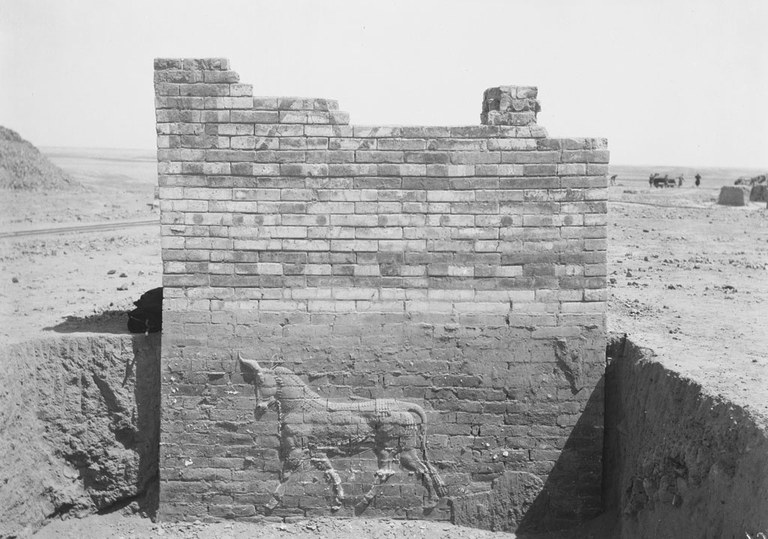 Photographer unknown, Portion of an Ishtar Gate wall found in situ, showing an earlier unglazed molded bull and part of a later glazed flat bull, Gelatin silver print, 1902
Photographer unknown, Portion of an Ishtar Gate wall found in situ, showing an earlier unglazed molded bull and part of a later glazed flat bull, Gelatin silver print, 1902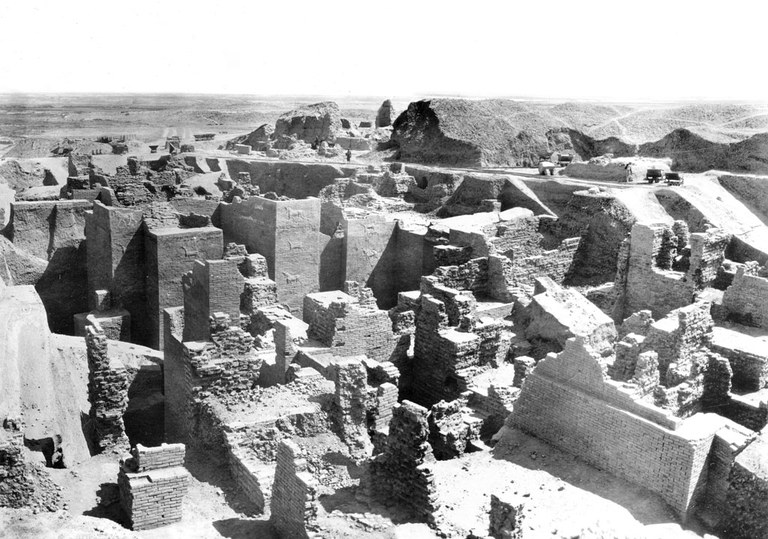 Photographer unknown, View of unglazed remains of the Ishtar Gate found in situ, Gelatin silver print, 1902
Photographer unknown, View of unglazed remains of the Ishtar Gate found in situ, Gelatin silver print, 1902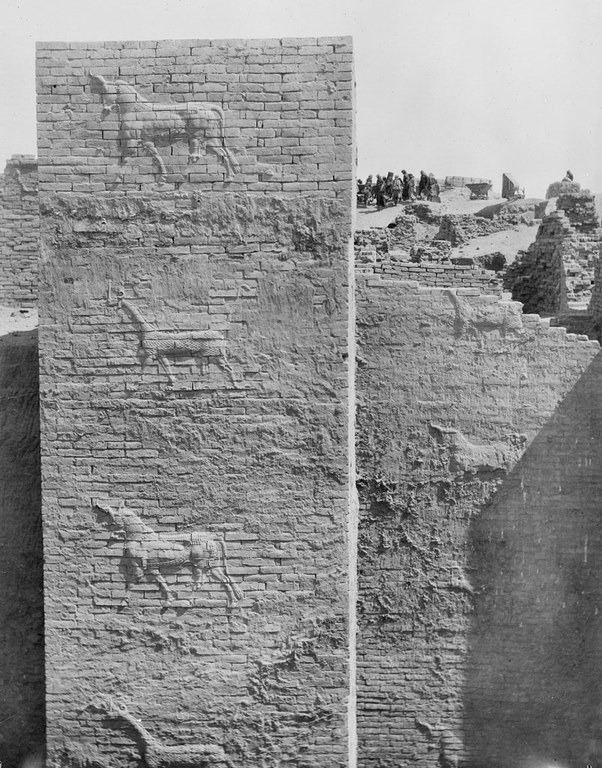 Remains of unglazed walls of the Ishtar Gate found in situ, Gelatin silver print, 1902
Remains of unglazed walls of the Ishtar Gate found in situ, Gelatin silver print, 1902 Friedrich Wachtsmuth, Reconstruction of the Ishtar Gate façade, Watercolor on paper, 1912
Friedrich Wachtsmuth, Reconstruction of the Ishtar Gate façade, Watercolor on paper, 1912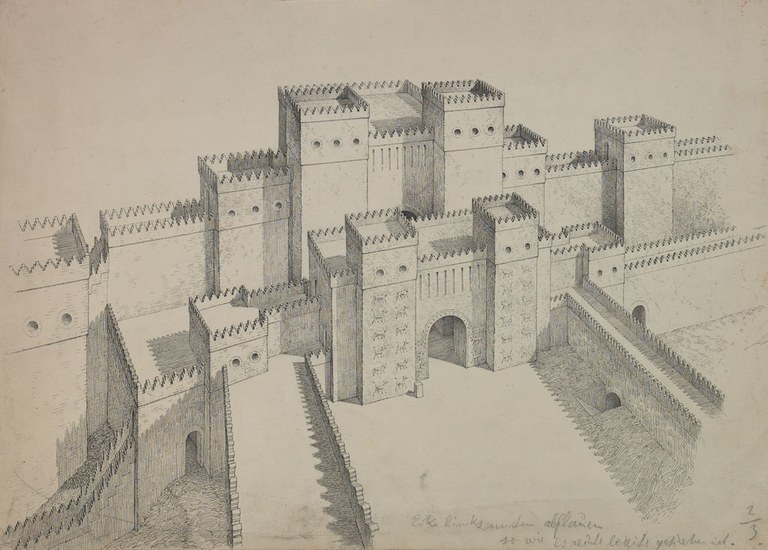 Alfred Bollacher, Reconstruction of the Ishtar Gate, Ink on paper, 1918
Alfred Bollacher, Reconstruction of the Ishtar Gate, Ink on paper, 1918 Radomir Vrbovsky, Ishtar gate in Pergamon museum in Berlin, stitched digital image showing the reconstructed Ishtar gate of Babylon in full view, 2014
Radomir Vrbovsky, Ishtar gate in Pergamon museum in Berlin, stitched digital image showing the reconstructed Ishtar gate of Babylon in full view, 2014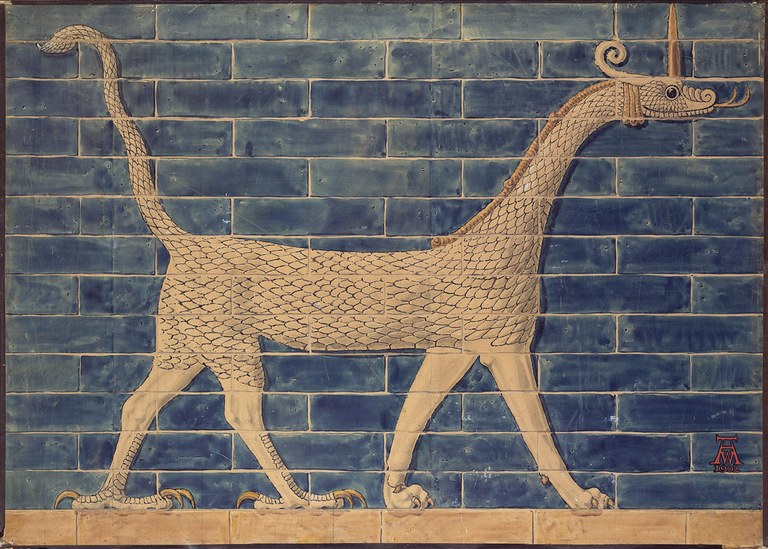 Walter Andrae, Reconstruction of bricks with a mušhuššu-dragon from the Ishtar Gate, Watercolor and graphite on board, 1902
Walter Andrae, Reconstruction of bricks with a mušhuššu-dragon from the Ishtar Gate, Watercolor and graphite on board, 1902 Walter Andrae, Reconstruction of a brick with lion fur, Watercolor on paper, 1899
Walter Andrae, Reconstruction of a brick with lion fur, Watercolor on paper, 1899 Reconstructed panel of bricks with a striding lion, Processional Way, El-Kasr Mound, Babylon, Iraq, Molded and glazed baked clay, Neo-Babylonian Period (reign of Nebuchadnezzar II, 604—562 BCE)
Reconstructed panel of bricks with a striding lion, Processional Way, El-Kasr Mound, Babylon, Iraq, Molded and glazed baked clay, Neo-Babylonian Period (reign of Nebuchadnezzar II, 604—562 BCE) Walter Andrae, Partial reconstruction of throne room façade from Nebuchadnezzar II's Southern Palace showing fitters' marks on bricks, Watercolor on paper, 1901
Walter Andrae, Partial reconstruction of throne room façade from Nebuchadnezzar II's Southern Palace showing fitters' marks on bricks, Watercolor on paper, 1901 Walter Andrae, Partial reconstruction of a wall from Nebuchadnezzar II's Southern Palace showing fitters' marks on bricks, based on collapsed remains found in situ, Watercolor on paper, 1901
Walter Andrae, Partial reconstruction of a wall from Nebuchadnezzar II's Southern Palace showing fitters' marks on bricks, based on collapsed remains found in situ, Watercolor on paper, 1901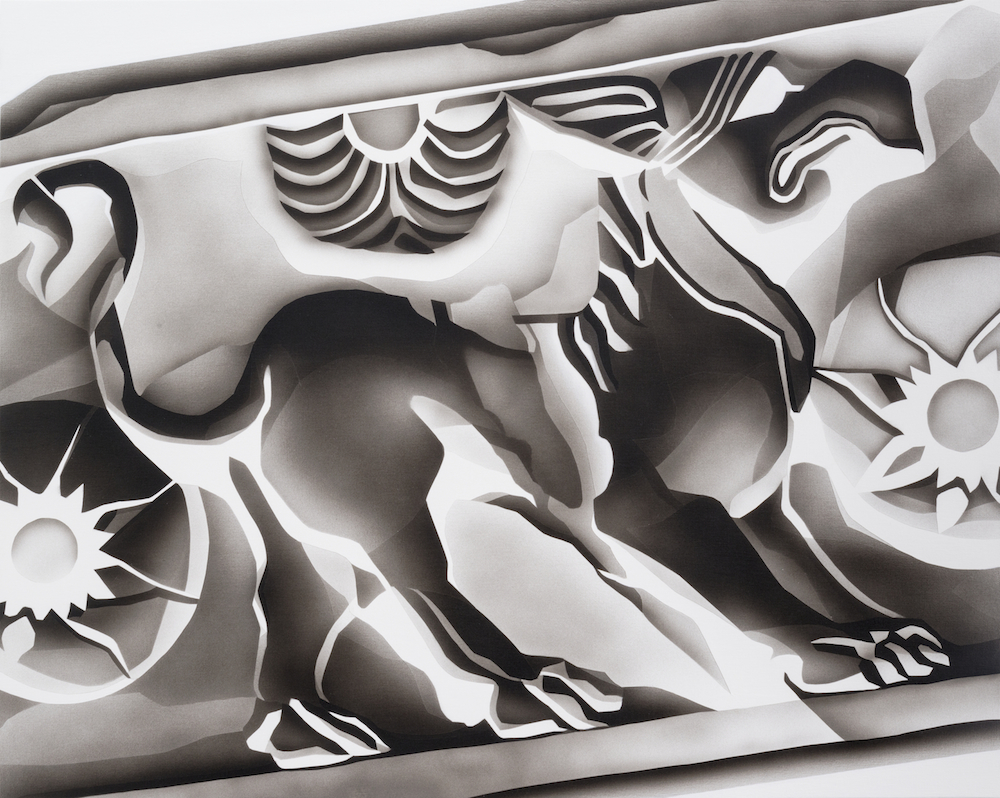 Tracy Molis, Untitled (Griffin), acrylic on canvas, 2015
Tracy Molis, Untitled (Griffin), acrylic on canvas, 2015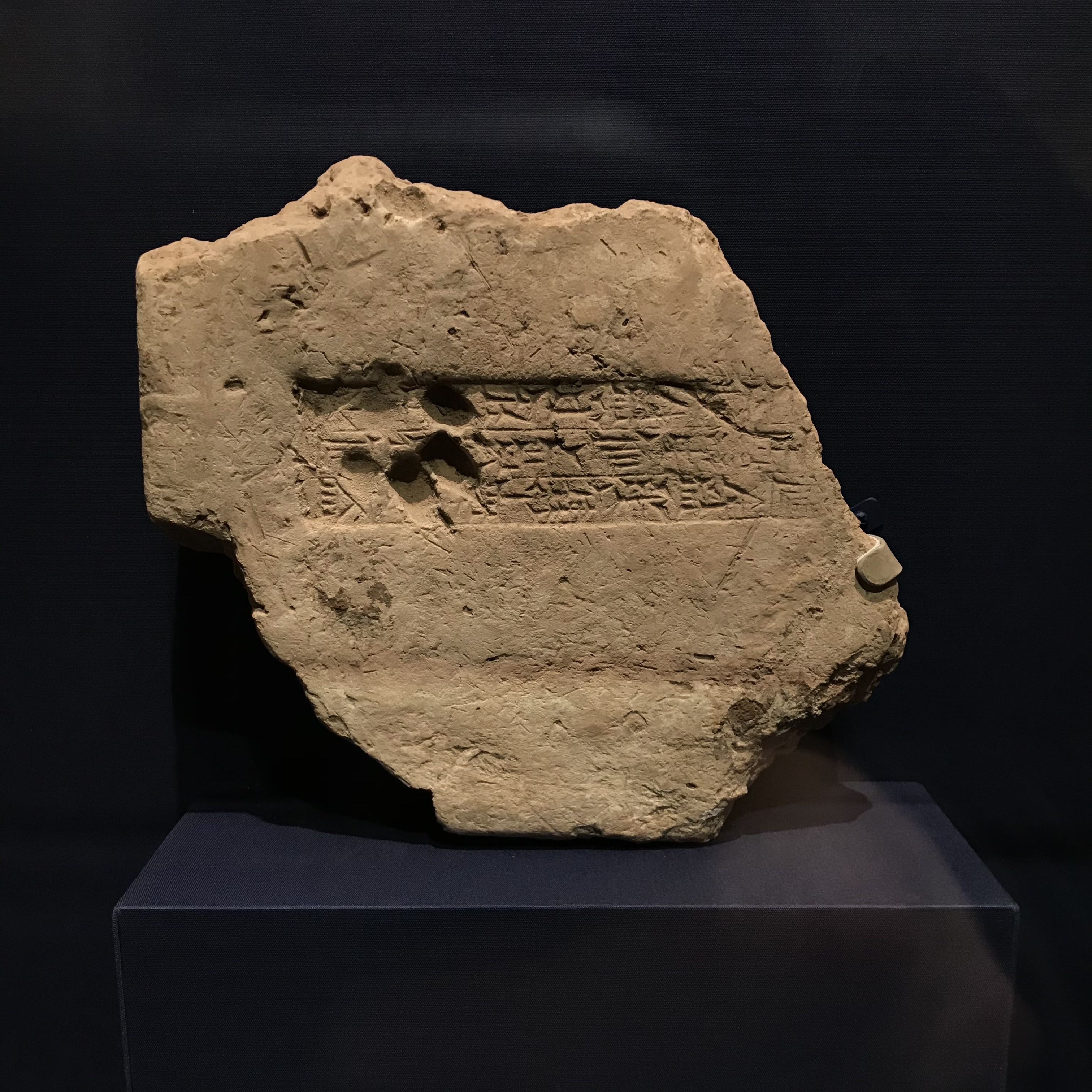 Fragmentary brick stamped with cuneiform inscription of Nebuchadnezzar II and impressed with a dog's paw print, Baked clay, Neo-Babylonian Period, 604–562 BCE
Fragmentary brick stamped with cuneiform inscription of Nebuchadnezzar II and impressed with a dog's paw print, Baked clay, Neo-Babylonian Period, 604–562 BCE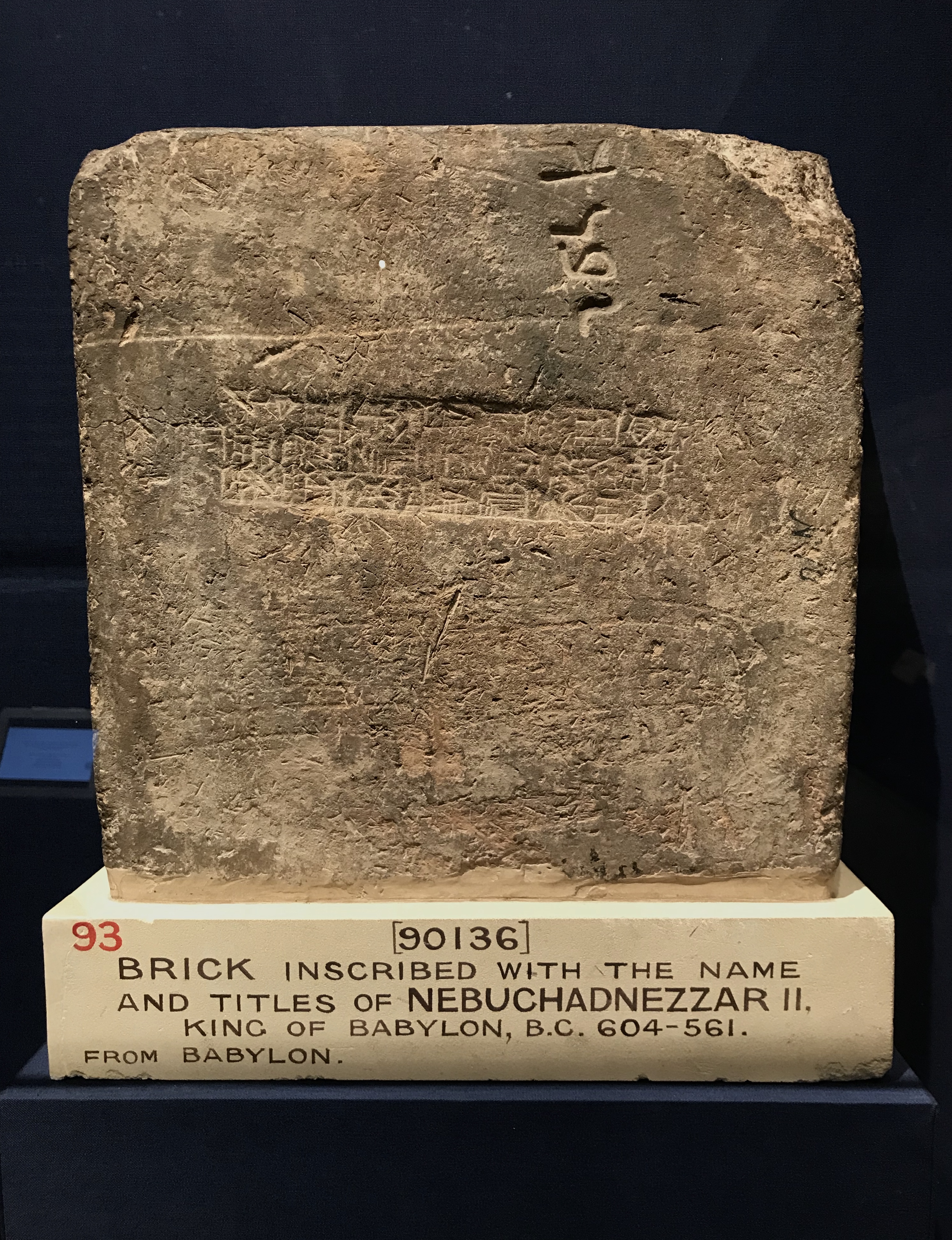 Brick stamped with cuneiform inscription of Nebuchadnezzar II and incised with alphabetic worker's inscription (zbn'), Baked clay, Neo-Babylonian Period, 604–562 BCE
Brick stamped with cuneiform inscription of Nebuchadnezzar II and incised with alphabetic worker's inscription (zbn'), Baked clay, Neo-Babylonian Period, 604–562 BCE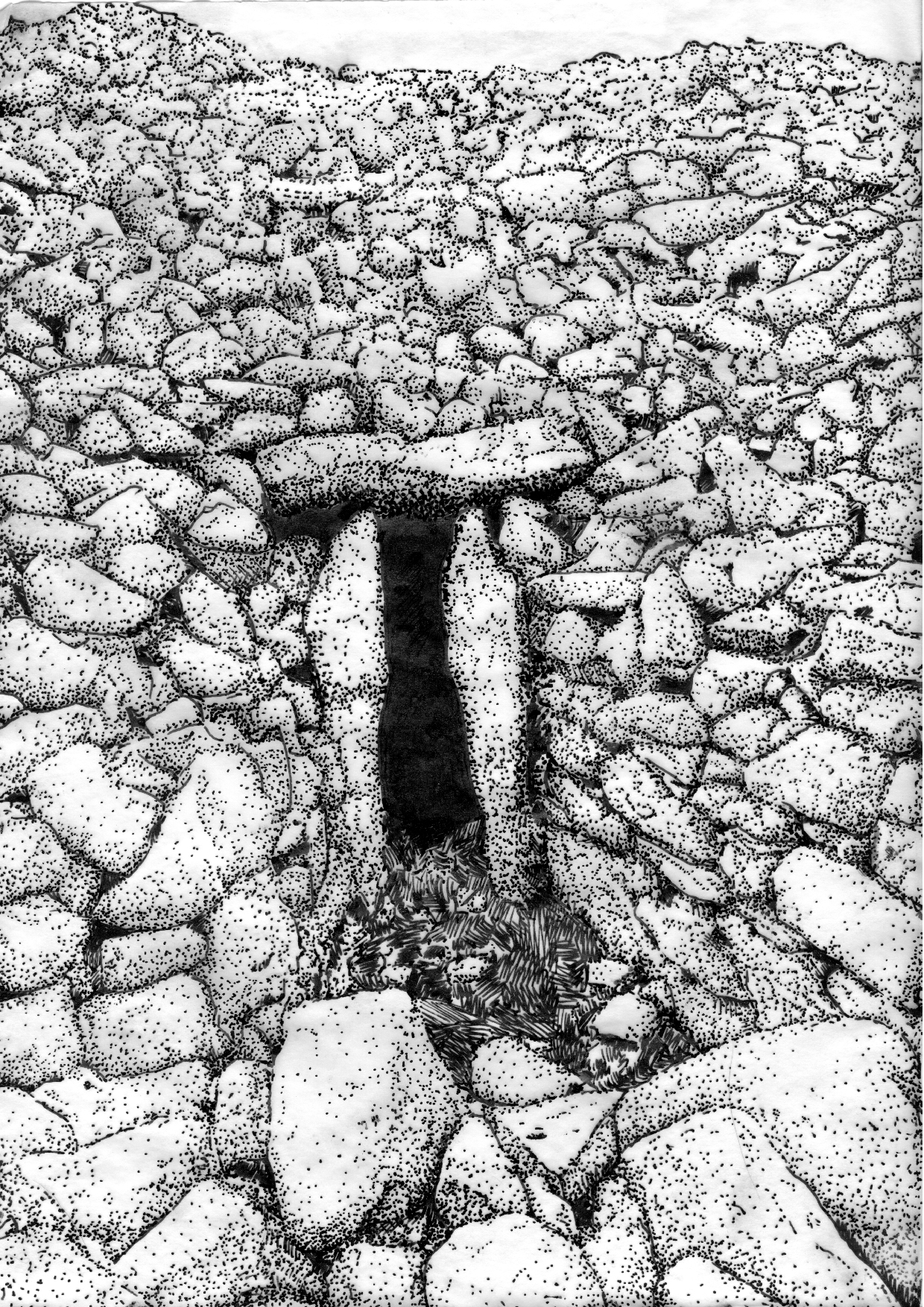 Elizabeth Gardner, Entrance to Seefin Passage Tomb, Co Wicklow, Ireland (Neolithic tomb dated to approximately 3,300BCE), Pen on drafting film, 2019
Elizabeth Gardner, Entrance to Seefin Passage Tomb, Co Wicklow, Ireland (Neolithic tomb dated to approximately 3,300BCE), Pen on drafting film, 2019 Elizabeth Gardner, Elizabeth Gardner, Reconstruction plan of the known buried and upstanding remains at Glastonbury Abbey, as it stood at the time of the dissolution (1539) for the Abbey Guidebook, (commissioned by Trustees of Glastonbury Abbey and University of Reading with data from Galstonbury Abbey, University of Reading, AHRC/Society of Antiquaries, London and University of York) Digital compilation using drone imagery, drawing overlays using Adobe CS and GIS siteplans, 2016
Elizabeth Gardner, Elizabeth Gardner, Reconstruction plan of the known buried and upstanding remains at Glastonbury Abbey, as it stood at the time of the dissolution (1539) for the Abbey Guidebook, (commissioned by Trustees of Glastonbury Abbey and University of Reading with data from Galstonbury Abbey, University of Reading, AHRC/Society of Antiquaries, London and University of York) Digital compilation using drone imagery, drawing overlays using Adobe CS and GIS siteplans, 2016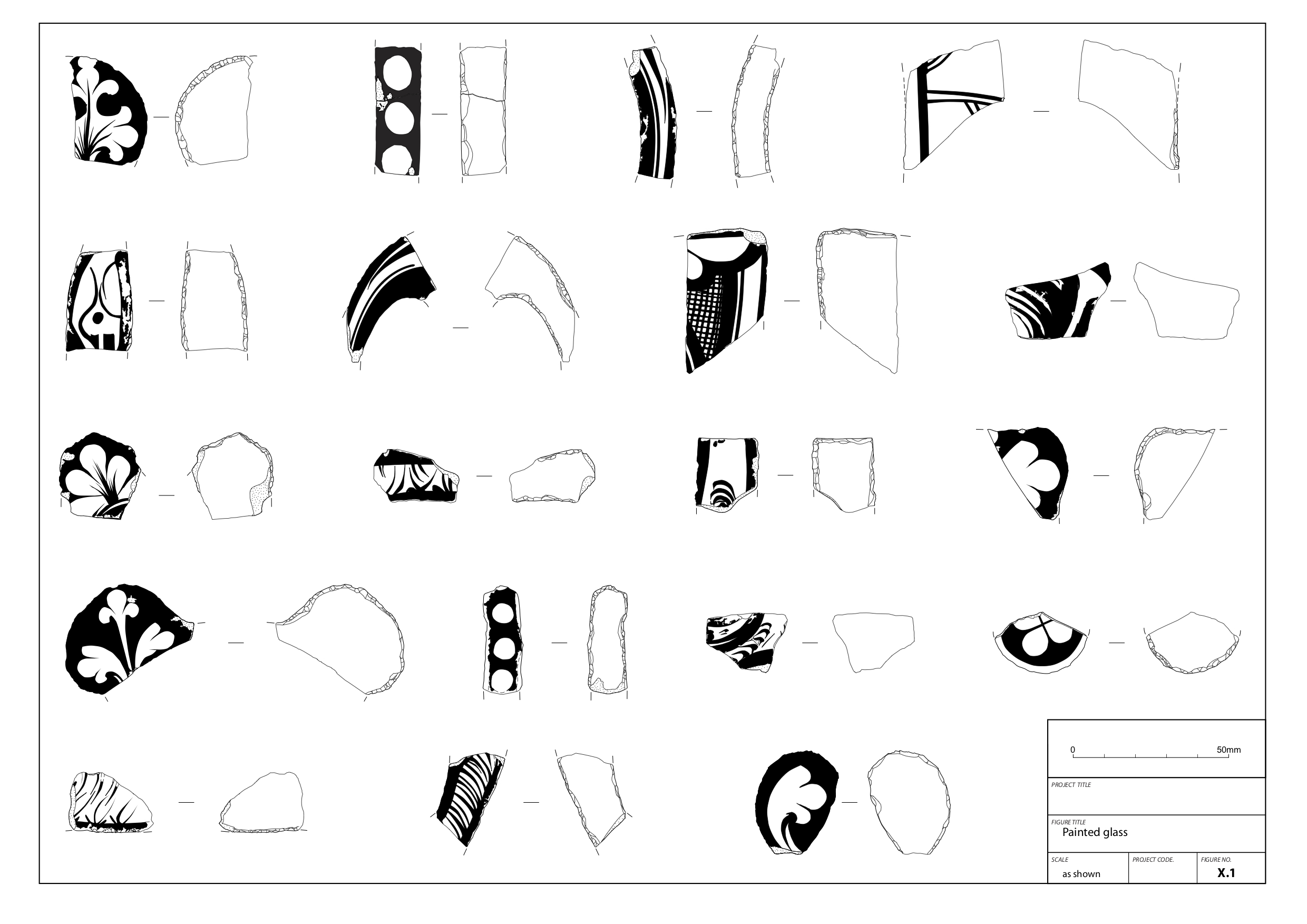 Elizabeth Gardner, A selection of shards of painted window glass from excavations of the Priory Church by Context One Archaeological Services (2005); glass dates from c. 1115AD and the windows it came from were destroyed by musket fire during the "Iconoclastic Fury" of 1539AD, scale 1:1 at A3, pen on drafting film, tracing paper and digitally collated, 2009
Elizabeth Gardner, A selection of shards of painted window glass from excavations of the Priory Church by Context One Archaeological Services (2005); glass dates from c. 1115AD and the windows it came from were destroyed by musket fire during the "Iconoclastic Fury" of 1539AD, scale 1:1 at A3, pen on drafting film, tracing paper and digitally collated, 2009 Elizabeth Gardner, A selection of shards of painted window glass from excavations of the Priory Church by Context One Archaeological Services (2005); glass dates from c. 1115AD and the windows it came from were destroyed by musket fire during the "Iconoclastic Fury" of 1539AD, scale 1:1 at A3, pen on drafting film, tracing paper and digitally collated, 2009
Elizabeth Gardner, A selection of shards of painted window glass from excavations of the Priory Church by Context One Archaeological Services (2005); glass dates from c. 1115AD and the windows it came from were destroyed by musket fire during the "Iconoclastic Fury" of 1539AD, scale 1:1 at A3, pen on drafting film, tracing paper and digitally collated, 2009